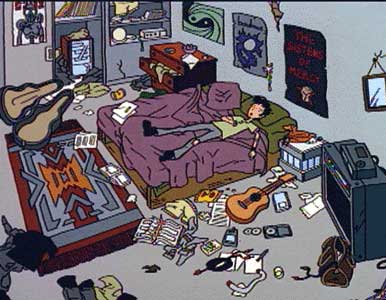
In 2001, the philosopher Roger-Pol Droit published his book Astonish Yourself! (subtitled 101 Experiments in the Philosophy of Everyday Life), which is based on the premise that philosophical insight is achieved when one looks at everyday actions - which are usually taken for granted - from a slightly different perspective. The simple exercises in this book, while at once playful and profound, irreverent and wise, have the potential to challenge and shake many of our preconceived notions about the meaning of words, the stability of the outside world, and even our sense of identity. The idea, through these mostly simple everyday adventures, is to provoke tiny moments of awareness that produce astonishment and encourage us to explore further.
Take this quirky example (#13) - Drink While Urinating: just have a large glass of water at hand and start drinking when you begin to urinate (trying, as far as possible, to drink the water straight down without pausing). The sensation is quite bizarre, as Droit points out: The water you evacuate seems to be synchronized with that entering your mouth. In a few seconds you will feel directly wired, from throat to urethra, from stomach to bladder - a physiology that is impossible but that you inuit, directly and unquestionably, to be real.
One of the most intriguing experiments, for me, is #64: Look for a Blue Food. I had never realized that while there is a phenomenal amount of blue on earth (which even looks blue as seen from space) and food exists in all colors, there is nothing blue to eat in nature. Droit calls this a very straightforward and yet a very considerable mystery, and there is a suggestion that we may have even evolved to find blue food repulsive; it is as if we can't digest the sky, the ocean, or the planet itself.
Which makes the following fact even more interesting than it already is: according to a study published July 27, 2009, by the Proceedings of the National Academy of Sciences, a derivative of the common food coloring Blue Number One (found in M&M's and Gatorade) was found to reverse paralysis in rats and, unlike existing treatments, there was no toxic clinical side effect other than a somewhat adorable blue skin and eyes. The substance may someday be the first major intervention available for people with spinal cord trauma, said study co-author Maiken Nedergaard, a neuroscientist at the University of Rochester Medical Center in Rochester, New York. (But until then, she suggested that patients with spinal cord injuries might want to drink blue Gatorade.)
And you know what else? The rats in the experiment also enjoyed improved bladder control - which would not only be a big deal for humans with spinal cord injuries, but would also be rather helpful should one desire to try out the first experiment described in this post!
Article in National Geographic
